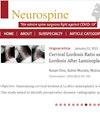Robotic-Assisted Spine Surgery: Role in Training the Next Generation of Spine Surgeons
IF 3.8
2区 医学
Q1 CLINICAL NEUROLOGY
引用次数: 0
Abstract
Objective This study aimed to assess the degree of interest in robot-assisted spine surgery (RASS) among residents and to investigate the learning curve for beginners performing robotic surgery. Methods We conducted a survey to assess awareness and interest in RASS among young neurosurgery residents. Subsequently, we offered a hands-on training program using a dummy to educate one resident. After completing the program, the trained resident performed spinal fusion surgery with robotic assistance under the supervision of a mentor. The clinical outcomes and learning curve associated with robotic surgery were then analyzed. Results Neurosurgical residents had limited opportunities to participate in spinal surgery during their training. Despite this, there was a significant interest in the emerging field of robotic surgery. A trained resident performed RASS under the supervision of a senior surgeon. A total of 166 screw insertions were attempted in 28 patients, with 2 screws failing due to skiving. According to the Gertzbein-Robbins classification, 85.54% of the screws were rated as grade A, 11.58% as grade B, 0.6% as grade C, and 1.2% as grade D. The clinical acceptance rate was approximately 96.99%, which is comparable to the results reported by senior experts and time per screw statistically significantly decreased as experience was gained. Conclusion RASS can be performed with high accuracy within a relatively short timeframe, if residents receive adequate training.机器人辅助脊柱手术:在培训下一代脊柱外科医生中的作用
目的 本研究旨在评估住院医生对机器人辅助脊柱手术(RASS)的兴趣程度,并调查机器人手术初学者的学习曲线。方法 我们对年轻的神经外科住院医师进行了一项调查,以评估他们对 RASS 的认识和兴趣。随后,我们使用假人对一名住院医师进行了实践培训。完成培训后,受训住院医师在导师的指导下使用机器人辅助进行了脊柱融合手术。然后分析了与机器人手术相关的临床结果和学习曲线。结果 神经外科住院医师在培训期间参与脊柱手术的机会有限。尽管如此,他们对机器人手术这一新兴领域仍抱有极大的兴趣。一名训练有素的住院医师在一名资深外科医生的指导下进行了 RASS 手术。共为28名患者植入了166枚螺钉,其中2枚螺钉因滑脱而失败。根据 Gertzbein-Robbins 分级法,85.54% 的螺钉被评为 A 级,11.58% 为 B 级,0.6% 为 C 级,1.2% 为 D 级。临床接受率约为 96.99%,与资深专家报告的结果相当,随着经验的积累,每颗螺钉所需的时间在统计学上显著减少。结论 如果住院医师接受了充分的培训,RASS 可以在相对较短的时间内以较高的准确度完成。
本文章由计算机程序翻译,如有差异,请以英文原文为准。
求助全文
约1分钟内获得全文
求助全文

 求助内容:
求助内容: 应助结果提醒方式:
应助结果提醒方式:


